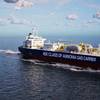Indonesians Face Daunting Task to Recover Bodies from Sunken Ferry
Indonesian teams searching a lake for a sunken ferry in the hope of recovering nearly 200 bodies trapped inside have to contend with dangerous currents and cold, murky water far deeper than any scuba diver can ever go.
The over-loaded ferry Sinar Bangun sank in bad weather in Lake Toba on Sumatra island on Monday. The lake, in the crater of an ancient supervolcano, is ringed by steeply sloping mountains, and is about 450 meters (1,500 feet) deep.
Three people have been confirmed dead and 18 people were rescued after the 15-tonne wooden boat went down in Indonesia's deadliest ferry disaster for nearly a decade.
Some 192 people are missing, most believed trapped inside the boat as it slipped beneath the waves.
Indonesia's search and rescue agency (Basarnas) has sent divers out onto the lake but there's little they can do, going down a maximum of only about 40 meters (130 feet).
Underwater drones and sonar devices have also been brought in but they've found no trace of the boat on the bottom of a lake that has never been properly surveyed.
"If there was data on the depth of Lake Toba it would make this easier. We have to guess," said Basarnas operations director Bambang Suryo.
This is not the first underwater recovery Indonesia has undertaken in recent years.
In 2014, an AirAsia flight carrying 162 people crashed in the Java Sea. But the plane was in water only about 50 metres deep. It was found within days.
Suryo said even if the boat is found, it would be impossible to recover the bodies without raising the vessel.
Recovery experts hope to find the boat with a sonar scanning device which is able to scour the bottom at depths of up to 600 meters.
"Once we've got the suspected position and depth, Basarnas will decide what to do next," said Ari Wibowo, an official with the Indonesian navy's hydrology and oceanography center.
'Inland Sea'
But bringing up the boat will be a huge, expensive job requiring heavy lifting equipment and technical expertise.
"They could locate it within days but it's the recovery that is the real difficulty," said David Mearns, a British-based search and recovery expert who likened Lake Toba to "an inland sea".
Navy diver Koko Hadi Wiratama, 27, said going down in the high-altitude, fresh-water lake was complicated by strong currents and waves that pushed around the dinghies divers are tethered to.
"It's dark. We can only communicate by direct contact between divers' bodies," he said after diving to a depth of about 30 metres, adding that one oxygen tank would only allow a 17-minute dive.
Objects are less buoyant in fresh water, compared with salt water, meaning bodies or debris would not float as easily, he said, adding that the fresh water seemed to weigh on divers more used to the sea.
"It's heavier when we want to ascend, it feels heavy," Wiratama said.
The lake fills a caldera left after one of the world's biggest known volcanic eruptions, some 75,000 years ago.
The tourist destination has seen a string of ferry accidents - including one in 1997 when about 100 people were killed.
Relatives of the victims can only wait, their frustration growing.
"The search effort is still half-hearted," said Fernando Nainggolan, 22, whose parents and uncle are missing.
"We're exhausted waiting here, and disappointed," he said. "This hasn't happened the way we'd hoped."
Suryo and his team are determined to do all they can to find the boat and ensure victims get a proper burial.
"We will not give up," he said.
(Additional reporting and writing by Kanupriya Kapoor; Editing by Ed Davies and Robert Birsel)














